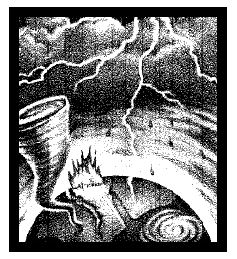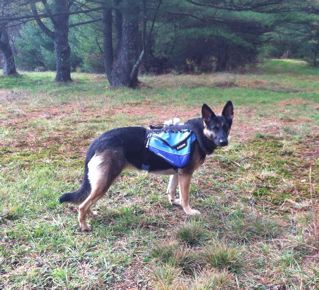 In Part 1 of 2 in this series, we mentioned some sites to check for emergency information for storm preparedness, including for downloading apps to a smart phone, and some water and food considerations to stock in advance of any emergency storm situation.
In Part 1 of 2 in this series, we mentioned some sites to check for emergency information for storm preparedness, including for downloading apps to a smart phone, and some water and food considerations to stock in advance of any emergency storm situation.
In this Part 2 of 2 of this series, we’ll mention various other considerations, including clothing; paperwork pointers including having handy paper versions of emergency contact info for your own family and then for local services; other equipment and supplies to consider and some ideas of what to possibly have handy for the various human family members; and as well supplies to have handy for any family pets.
NOTE: Please remember that the following is for infotainment purposes only and is NOT meant to be all inclusive and is NOT meant to replace information available in your own unique location. You are URGED to make yourself aware of information available in your own locale from emergency management services there as they are most familiar with the location where you live and how you should prepare for any emergency in your area.
Clothing:
- Any water resistant clothing should be stored in waterproof containers so it can be easily accessed as needed– the space-saving type bags (which allow you to remove any extra air) can be especially useful for this purpose.
- Depending upon your climate, that could mean extra outerwear and other items such as water resistant shoes and/or water resistant boots, jackets with hoods, ponchos, gloves, hats, wraps/blankets, etc.
Appropriate Fire Extinguishers:
- Remind yourself where you keep your A-B-C or other type fire extinguisher(s) in case you need to reach same in the dark with only flashlights to guide you. Especially keep these near by if you plan to use a camp stove to heat up any food and/or water.
Paperwork:
- All important papers for you and your family including copies of credit cards and passports should be stored in a water-proof and fire-proof safe.
Available on you, in water resistant pouches should be:
- drivers license
- medical insurance cards
- credit cards
- passport if you live near a border crossing and might be considering crossing over into another country, along with some
- paper money in various denominations (we’ll mention this again later as well, since during a power outage in an area your credit cards might not be useful to you initially, whereas cash and/or traveller’s checks depending upon where your location is and where else you may be going may be king)
- contact number for insurance of all sorts
Emergency Information including Health & Medical Information; other Contact Information:
- Any child needs emergency contact info in waterproof packaging to be kept with the child at all times–and make sure any medical condition alert, including any allergy or intolerance information is FIRST on the listing, and make sure a picture of the child with the child’s name on it is also there, plus a picture of the child with the family in case family members get separated.
- Each member of the family should have emergency contact information with them as unfortunately in emergencies sometimes family members may become separated. If possible, include contact information for any family members or close friends who live in an area not anticipated to be affected by the storm system and could provide support if they can be reached and might even be able to provide shelter later on if need be.
- Medical Alert Bracelet, etc.: Make sure any family members who have a medical alert bracelet, etc., are wearing the bracelet, etc.
UPDATE your List of Emergency Contact Info for Local Services:
- Local Emergency Management Agency if run by your county
- Local Community Red Cross Including for area shelters
- Other Local Shelters (besides Red Cross) such as at schools, Salvation Army, etc.
- Police & Fire Depts if any number other than 911 is used in your area
- Public Health Department services your family might need to access
- Rescue services in your area if any are private
- Area Emergency Rooms and
- Area Urgent Care Centers
Other Equipment & Supplies:
- Portable radio(s) with fresh batteries and we actually like also having the emergency type radio(s) that you hand crank as backups –especially any one that has NOAA frequency setting, etc; make a note of the local AM and FM radio stations that provide updated information pertinent to your locale during an emergency in your area as well).
- At least one working flashlight with fresh batteries per person of appropriate size for the individual plus a couple of extra flashlights for the entire family unit that are of a larger size.
- Make sure you have refilled any medications and store them in easy enough to open containers inside resealable plastic bags and keep them with you at all times.
- Personal hygiene items of all types–include disposable special pads as needed, any needed disposable diapers for babies even if you usually use cloth diapers, disposable personal wipes, hand sanitizer)
- Emergency first aid kit with alcohol wipes and ointments and bandages, etc., including ace-type wrap bandages to deal with sprains that might occur
- Space-saving type (removal of excess air) stored washable blankets and sleeping bags (they are more portable if enclosed in the space-saving type bags), packaged tarp (to put under sleeping bags to help keep them dry), etc.
- Backup prescription glasses (better than contacts d/t dirty hands issues, wind issues, etc.–plus contacts need special cleaner solutions, etc.)
- Disposable dust masks sometimes can come in handy in windstorms; also bring scarf type wraps with you
- Check battery supplies including for specialty batteries such as hearing aid batteries, etc.
- Fill up the gas tanks on any cars
- Have gas can(s) filled up in case they are needed for refueling a vehicle (gas becomes scarce in many a storm situation)
- Area map should be kept in water-proof packaging
- Walking sticks should be available for older family members
- Evacuation travel bag packed with appropriate level of warmth clothing in case you somehow wind up at an emergency shelter; extra set of house keys and car keys with each adult or teen licensed to drive
- Cash of various denominations in water proof bags inside water proof container
- Emergency medical form for each family member inside water proof bag
- Fully charged cell phone inside waterproof bag; portable charger inside waterproof bag
- Waterproof matches
- Light sticks (which are considered safer than candles) for each family member
- *Manual safety-type can opener (that is actually a can lid uncrimper) as noted on our Pinterest site under Kitchen Gadget Favorites (the type of can opener that unseals cans, rather than cutting them is always best to use, especially in a storm crisis when the last thing anyone needs is a cut from a can lid, but a can opener that cuts off can lids could be used if there is no other option) for whoever will be opening canned food supplies as needed. Uncrimping style safety can openers really are much safer to use under low lighting conditions.
- Adults or children old enough to use them should each have their own multi-purpose tool, again because during an emergency sometimes family members become separated
- Walkie-talkie type two way radios if available
- If you have to leave your home, you may choose to use a wrench to shut off the main water supply and also the main gas supply to your house prior to leaving (this can help when it comes to gas main/water main emergencies)

Pet Supplies:
Pet supplies for your pet including adequate water & food/snacks (keep all pet food & snacks in waterproof containers) & appropriate bowls, medications, extra leashes, extra pet towels, cleanup bags and more, proof of rabies vaccination (in case you have to go to a shelter), records of microchip information, and photos and descriptions of pet(s) (should pet(s) become separated from you), emergency contact info that includes for their veterinarian, etc.
Portioning dry pet food into sealed plastic bags or having some canned product you can open with a safety can opener* can be particularly helpful (some pets only take certain meds with canned food, etc., so bring what your animal(s) are used to). Some pets actually are used to having a travel bag on their back and if so, bring that, also if possible, pet blanket/pad and at least one sturdy toy. (Image of pet dog with travel bag ©2012 courtesy of webmaster)
Make sure any dog and/or cat, etc., wears the collar and tags you have for the animal.
Hopefully you, your family and friends, and any pet family members will be able to make the best of a difficult situation by being better prepared for it. Sharing your own tips for coping with storms with family and friends may also benefit them as well.
If you are safe and sound and able, consider checking on those around you in your area, including any with various physical or intellectual challenges. Don’t forget to check on any elderly persons you know of, especially those who are frail and/or may live alone. Hopefully they will be able to find some support before the brunt of the storm hits, but be sure to check on them at least afterwards to see if they need any additional help.
Also consider contributing to any of the relief agencies that help those who experience the worst brunt of the storms to get through them. Your contribution might be of your time, and/or your talent, and/or your money.
Anyone who has gone through and survived a bad storm knows there’s no feeling comparable to being safe and sound after a storm. The aftermath of a storm can seem to last forever sometimes and any help is always welcome in the days, weeks, and sometimes months of cleanup & rebuilding of lives afterwards.

